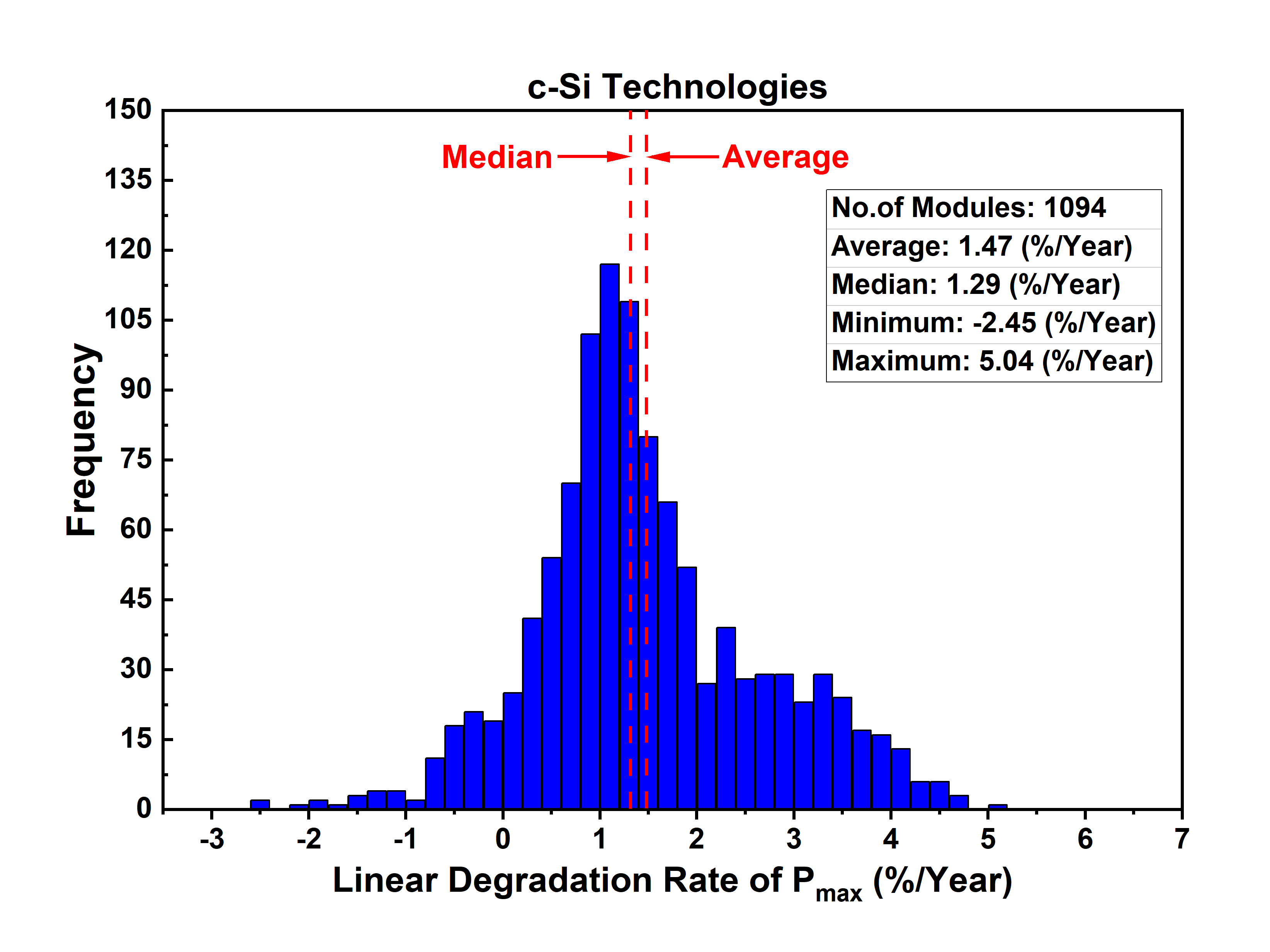


With the increase in the development of new technologies in photovoltaics, it is equally important to understand the vulnerabilities of such technologies, as it is expected to have a consistently good performance and ability to maintain trust among the consumers. Since eventually, the energy generated by the solar plants matters more than simply the installed capacity, it is important to pay attention to the long term reliability of PV power plants.
Looking into the global aspect, we see that with the increase in PV installations, the cost per watt of PV installations has significantly reduced along with the decrease in the module prices, making it accessible like never before. On the other hand, the warranties on PV modules have steadily increased as now most of the leading module manufacturers offers 25 to 30 years of linear power warranty with an annual degradation rate of less than 0.7%/year, such less value of degradation rate signifies a good performance.
Coming to the scenario in India, the initiatives taken by the government had lead to the solar industry significantly growing in our country. The target of solar photovoltaics installed capacity was targeted to 20 GW by the year 2022, which was achieved by 2018 itself. Most of the solar PV startups of the country focuses on the testing methods for reliability. NCPRE also has a significant role in this field. Initiated in the year 2013, NCPRE has conducted the All India Survey in the year2013, 2014, 2016 and 2018. The survey is conducted extensively across the country, starting from Leh and Ladakh to Tamil Nadu, where the team performed detailed field characterization of PV modules along with the modes and mechanism of degradation in PV modules deployed.

http://www.ncpre.iitb.ac.in/ncpre/research/report.html
In 2018, 580 TWh of electricity was generated from solar photovoltaics worldwide, exceeding the share of photovoltaics in global electricity for the first time, by 2%. By the end of 2018, the cumulative global installed capacity of solar photovoltaics crossed 512 GW mark. Most of the places on earth receive ample sunshine also happens to have hot climates which include most of India, Middle East, Arizona etc. In such high temperature and otherwise extreme end-user environments, the PV degradation rates need to be carefully studied to optimize the deployment of solar photovoltaics in such areas.
From the findings in the survey, as the module degradation in hot climatic zones is statisti- cally higher than that in cold climatic zones, it is clear that it becomes crucial to have proper module quality assessment in such hot climatic regions. Some of the research problems that are being explored for standards development are in the area of transportation and handling of PV modules, soiling and reliability of anti-soiling coatings, water quality for cleaning of PV panels etc. Soiling losses and degradation of modules are of prime interests in reliability. For proper standardization and adopted practices at the maintenance and monitoring level, there is a need to develop harsher yet relevant accelerated tests as mere qualification under IEC 61215 is not sufficient for in the hot climates. NCPRE is developing research and data-driven accelerated tests in consultation with the concerned industry stakeholders leading to new standards at domestic (Beauro of Indian Standards - BIS) and international (International Electrotechnical Commission - IEC) levels. The revised bypass diode test developed by NCPRE for modules in hot climates has been incorporated in the upcoming IEC TS 63126.